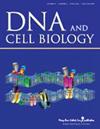基于转录组学的跳跃负荷诱导肌肉损伤中心基因靶向研究。
IF 2.6
4区 生物学
Q3 BIOCHEMISTRY & MOLECULAR BIOLOGY
引用次数: 0
摘要
本研究的目的是寻找可能在跳跃负荷引起的骨骼肌损伤中起关键作用的枢纽基因。将12只雌性Sprague Dawley大鼠分为正常对照组(NC)和跳肌损伤组(JI)。跳跃6周后,对NC组和JI组腓肠肌进行透射电镜、苏木精-伊红染色、转录组测序和基因分析、多蛋白相互作用网络预测、实时荧光定量PCR检测和Western blot检测。与NC大鼠相比,JI大鼠过度跳跃可导致明显的结构损伤和炎症浸润。NC大鼠与JI大鼠共确认了112个差异表达基因,其中59个基因上调,53个基因下调。利用在线String数据库,我们定位了转录调控网络中的4个枢纽基因,包括FOS、EGR1、ATF3和NR4A3。与NC大鼠相比,JI大鼠FOS、EGR1、ATF3和NR4A3 mrna的表达水平均降低(p p p p p > 0.05), p FOS、EGR1、ATF3和NR4A3基因可能在跳高性肌肉损伤中具有重要的功能。本文章由计算机程序翻译,如有差异,请以英文原文为准。
Targeting Hub Genes Involved in Muscle Injury Induced by Jumping Load Based on Transcriptomics.
The purpose of this study was to find hub genes that may play key roles in skeletal muscle injury induced by jumping load. Twelve female Sprague Dawley rats were divided into the normal control (NC) group and the jumping-induced muscle injury (JI) group. After 6 weeks of jumping, transmission electron microscopy, hematoxylin-eosin staining, transcriptomics sequencing and genes analysis, interaction network prediction of multiple proteins, real-time PCR detection, and Western blotting were performed on gastrocnemius muscles from NC and JI groups. As compared with NC rats, excessive jumping can result in notable structural damage and inflammatory infiltration in JI rats. A total of 112 differentially expressed genes were confirmed in NC rats versus JI rats, with 59 genes upregulated and 53 genes downregulated. Using the online String database, four hub genes in the transcriptional regulatory network were targeted, including FOS, EGR1, ATF3, and NR4A3. All expression levels of FOS, EGR1, ATF3, and NR4A3 mRNAs were decreased in JI rats compared with NC rats (p < 0.05 or p < 0.01). All expression levels of c-Fos, EGR1, ATF3, and NOR1 proteins were upregulated in JI rats (p < 0.01, p < 0.05, p > 0.05, and p < 0.01, respectively). Collectively, these findings indicate that FOS, EGR1, ATF3, and NR4A3 genes may be functionally important in jumping-induced muscle injury.
求助全文
通过发布文献求助,成功后即可免费获取论文全文。
去求助
来源期刊

DNA and cell biology
生物-生化与分子生物学
CiteScore
6.60
自引率
0.00%
发文量
93
审稿时长
1.5 months
期刊介绍:
DNA and Cell Biology delivers authoritative, peer-reviewed research on all aspects of molecular and cellular biology, with a unique focus on combining mechanistic and clinical studies to drive the field forward.
DNA and Cell Biology coverage includes:
Gene Structure, Function, and Regulation
Gene regulation
Molecular mechanisms of cell activation
Mechanisms of transcriptional, translational, or epigenetic control of gene expression
Molecular Medicine
Molecular pathogenesis
Genetic approaches to cancer and autoimmune diseases
Translational studies in cell and molecular biology
Cellular Organelles
Autophagy
Apoptosis
P bodies
Peroxisosomes
Protein Biosynthesis and Degradation
Regulation of protein synthesis
Post-translational modifications
Control of degradation
Cell-Autonomous Inflammation and Host Cell Response to Infection
Responses to cytokines and other physiological mediators
Evasive pathways of pathogens.
 求助内容:
求助内容: 应助结果提醒方式:
应助结果提醒方式:


